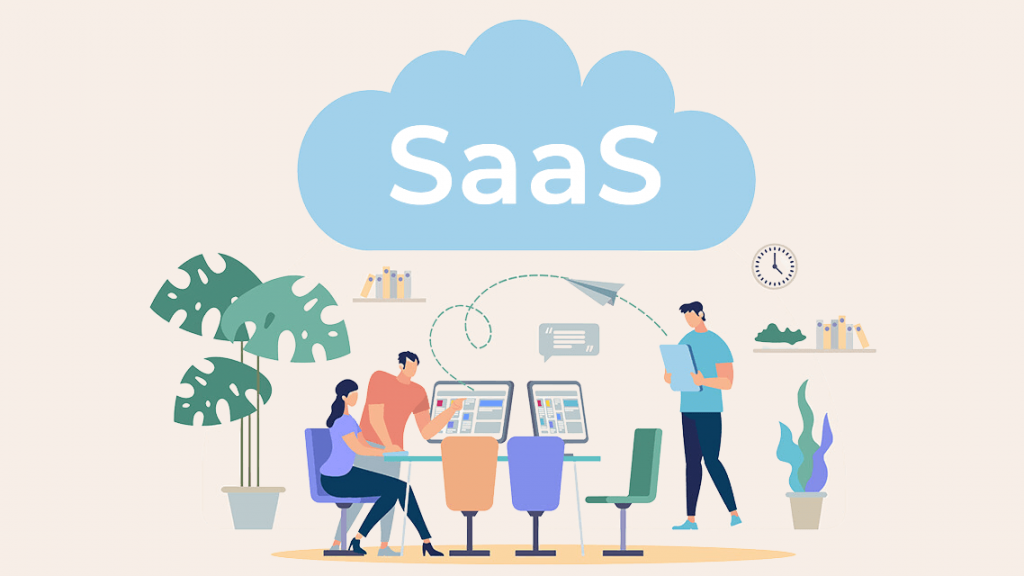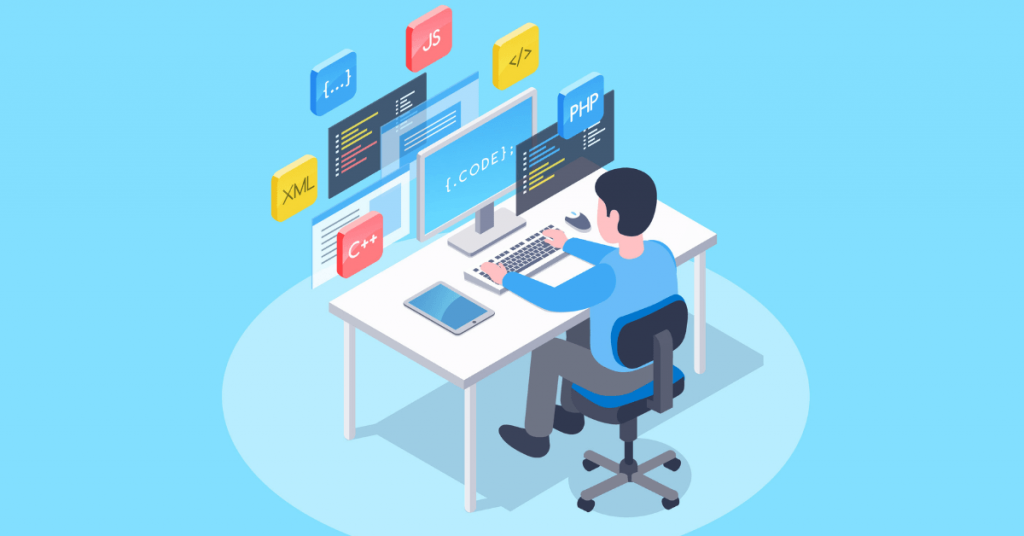Are you ready to launch your own SaaS startup? Look no further! Our definitive guide is here to help you navigate the exciting journey of starting a SaaS company. From ideation to execution, we’ll provide you with actionable insights, expert tips, and proven strategies to ensure a successful launch of SaaS startups. Join us as we unveil the secrets to building and scaling a thriving SaaS business that will captivate your target audience and drive your entrepreneurial dreams to new heights. Let’s dive in and make your SaaS startup a resounding success!
What is a SaaS company?
A SaaS company refers to a Software as a Service company. SaaS is a software distribution model where software applications are delivered over the internet on a subscription basis. Instead of purchasing and installing software on individual computers or servers, users access and use the software through a web browser.
In the case of a SaaS company, its primary business revolves around developing, hosting, and providing access to software applications as a service. These companies develop and maintain the software, handle infrastructure and security, and deliver ongoing updates and support to their customers.
Customers of a SaaS company typically pay a recurring fee, often on a monthly or annual basis, to access and use the software. This model offers several benefits, such as lower upfront costs, scalability, flexibility, and the ability to access software from anywhere with an internet connection.
SaaS companies cover a wide range of software and applications, including customer relationship management (CRM), project management, human resources, accounting, collaboration tools, and many more. Some well-known examples of SaaS companies include Salesforce, Slack, Dropbox, and Zendesk.

How to Start a Software as a Service Company?
You must be eager to delve into the world of software as a service (SaaS) and embark on the journey of starting your own SaaS company. But to launch SaaS Startups is not easy as it sounds. So, let’s dive in and explore steps on how to start a software-as-a-service company!
1. Identify a Niche:
Choose a specific industry or market segment that has a problem or pain point that can be effectively solved through software. Narrowing down your target audience will help you tailor your product and marketing efforts more effectively.
2. Research and Validate your SaaS Idea:
Conduct thorough market research to understand your target market’s needs, preferences, and existing solutions. Validate your business idea by gathering feedback from potential customers or industry experts to ensure there is a demand for your product.
Talking to the people will help you find the answer to a few questions:
- Is the problem your SaaS idea aims to solve resonating with your target audience?
- Are potential customers interested in and willing to use your SaaS product?
- What are the pain points or challenges your target audience is experiencing that align with your SaaS idea?
- Are there any specific features or functionalities that potential customers find appealing or lacking in your SaaS idea?
- How does your SaaS idea compare to existing solutions or competitors in the market?
3. Define Your Value Proposition:
Clearly articulate the unique value your SaaS product offers to customers. Identify how it solves their pain points or improves their processes, highlighting the benefits and advantages over existing solutions in the market.
4. Develop a Minimum Viable Product (MVP):
Build an initial version of your software that includes core features and functionality. The MVP should be focused on delivering value to early customers and collecting feedback to guide further development.
Minimum Viable Product Examples:
- Landing Page MVP: Create a simple landing page that describes your SaaS product’s value proposition and features. Include a call-to-action (CTA) button for users to sign up or express interest. This MVP helps gauge initial user interest and collect email addresses for further communication.
- Wireframe Prototype MVP: Develop a basic visual representation or mockup of your SaaS product’s user interface (UI) using wireframing tools. This MVP allows you to validate the user flow, functionality, and overall user experience before investing in full-scale development.
- Concierge MVP: Offer a manual or personalized service to simulate the core features of your SaaS product. This MVP involves manually fulfilling user requests instead of relying on automated processes. It helps test the demand and viability of your product concept.
- Crowdfunding MVP: Create a crowdfunding campaign presenting your SaaS product idea and its value proposition. This MVP allows you to validate market interest and gather pre-orders or financial support, indicating potential demand and market viability.
- Piecemeal MVP: Develop and release individual components or modules of your SaaS product separately to test their market acceptance and value. This approach helps validate different aspects of your product while gradually building towards the complete solution.
- Product Design MVP: It involves creating visual mockups or prototypes of your SaaS product’s user interface (UI) and user experience (UX) without implementing the underlying functionality. It allows you to showcase the look and feel of your product, demonstrate its key features, and gather feedback on the design elements.
- Demo Video MVP: It involves creating a video presentation that showcases the key features, benefits, and value propositions of your SaaS product. The video includes Screen recordings, animations, and voice-over narration that make your product video engaging and informative.
Remember, the choice of MVP depends on your specific SaaS product and its unique characteristics.
5. Build a Team:
Assemble a skilled team with expertise in software development, design, marketing, and customer support. For the successful launch of SaaS startups you need to ensure that each team member aligns with your vision and shares a passion for delivering a high-quality product.
Things to be considered while building a Team for a SaaS company:
- Identify key roles and skill sets required: Determine the specific roles and expertise needed for your SaaS company, such as software development, UX/UI design, and data management.
- Evaluate cultural fit and collaboration: Assess candidates for their ability to work well in a fast-paced, agile environment and their alignment with your company’s values and vision.
- Seek diverse perspectives and experiences: Consider building a team that brings a range of backgrounds and perspectives to foster innovation and creativity.
- Balance technical skills and business acumen: Look for individuals who possess a combination of technical expertise and business acumen to drive both product development and strategic decision-making.
- Plan for scalability and future growth: Consider the scalability of your team and the ability to scale up as your SaaS company expands, ensuring you have a plan in place for hiring and retaining talent as needed.
6. Create a Business Plan:
Develop a comprehensive business plan that outlines your target market, competition, marketing and sales strategies, pricing models, financial projections, and growth plans. A well-defined business plan will serve as a roadmap for your company’s success.
7. Secure Funding:
Determine the financial resources required to launch and scale your SaaS company. Explore various funding options such as self-funding (bootstrapping), seeking investment from angel investors or venture capitalists, or applying for government grants or startup incubator programs.
8. Set Up Infrastructure:
Establish the necessary technical infrastructure for your SaaS business. This includes cloud hosting to ensure scalability and reliability, data storage solutions to handle user data securely, and implementing robust cybersecurity measures to protect customer information.
9. Develop a Pricing Model:
Determine a pricing structure that aligns with the value your SaaS product delivers. Consider factors such as the features and functionality offered, customer acquisition costs, competitive pricing, and the willingness of your target market to pay for your solution.
SaaS products are launched by using LTD (Lifetime deal) or subscription-based pricing model. In LTD customers pay once for lifetime use and in subscription-based pricing it usually pays monthly or annually. It is important to know pricing models to launch SaaS startups.
Other SaaS pricing models include:
- Per User Pricing: Charge customers based on the number of users accessing your SaaS product.
- Tiered Pricing: Offer multiple pricing tiers with different features, allowing customers to choose the most suitable option.
- Usage-Based Pricing: Determine pricing based on the volume or frequency of usage.
- Freemium Pricing: Provide a basic version of your SaaS product for free while offering advanced features or premium services at a cost.
- Flat-Rate Pricing: Set a fixed price for unlimited access to your SaaS product.
- Value-Based Pricing: Determine the price based on the perceived value or impact your SaaS product delivers to customers’ businesses.
- Per Organization Pricing: Set pricing based on the size or scale of the customer’s organization.
- Seat-Based Pricing: Price is based on the number of active user seats or licenses required.
- Custom Pricing: Tailor pricing to meet the specific needs of individual customers.
- Partner or Reseller Pricing: Establish pricing models for partners or resellers distributing or selling your SaaS product.
So in this growing SaaS market, finding the right SaaS pricing model for your software product is always better. Also, you can check other SaaS pricing models for a better understanding.
10. Implement Agile Development:
Embrace agile development methodologies to iteratively build and improve your SaaS product. This approach involves continuously gathering user feedback, implementing changes, and releasing updates to address customer needs and stay ahead of the competition.
11. Launch and Iterate:
Release your SaaS product to the market after ensuring it meets the basic requirements and provides value to customers. Gather user feedback and iterate on your product based on their suggestions and evolving market demands. Continuously refine your product-market fit.
12. Implement Marketing and Sales Strategies:
Develop a comprehensive marketing and sales plan to reach your target audience effectively. Utilize digital marketing techniques, create compelling content, engage with potential customers through social media channels, participate in an online community and explore partnerships or collaborations to expand your reach. Developing the right go-to-market (GTM) strategy helps you achieve your business goals.
13. Provide Excellent Customer Support:
Deliver outstanding customer support to build customer loyalty and retention. Actively listen to customer feedback and promptly address any issues or feature requests they may have. Provide robust documentation, tutorials, and training resources to help customers maximize the value of your product.
14. Monitor and Analyze Metrics:
Continuously track key performance indicators (KPIs) such as customer acquisition cost (CAC), customer lifetime value (CLTV), churn rate, revenue growth, and user engagement metrics. Analyze these metrics to gain insights into your business’s performance, make data-driven decisions, and identify areas for improvement. Also, Continuously improve your SaaS product, scale your customer base, and explore opportunities for expansion into new markets or additional product offerings.
How to Scale and Expand SaaS Company?
Scaling and expanding a SaaS (Software as a Service) company involves several key considerations. To achieve your business goals you need to have an effective growth strategy for SaaS startups. Here are some important points to keep in mind to scale and expand the business after successfully launch SaaS startups.
Product-Market Fit:
Ensure that your product or service addresses a significant pain point in the market and that there is a strong demand for it. Continuously gather feedback from customers and iterate on your offering to ensure it aligns with their needs.
Scalable Infrastructure:
Build a robust and scalable infrastructure that can handle increased demand as your customer base grows. Invest in scalable cloud infrastructure, automate processes, and optimize your technology stack to handle increased usage and data.
Customer Acquisition and Retention:
Develop a comprehensive customer acquisition strategy to attract new customers. This may include digital marketing, content marketing, SEO, paid advertising, partnerships, and referrals. Additionally, focus on customer retention by providing exceptional customer support, fostering a strong community, and regularly updating and improving your product.
Pricing and Monetization Strategy:
Continuously evaluate and refine your pricing strategy based on market dynamics, competition, and customer value. Consider different pricing models such as subscription-based, tiered pricing, usage-based, or freemium, depending on your target market and the value you provide.
Talent Acquisition and Development:
As you scale, hiring the right talent becomes crucial. Identify the key roles you need to fill, attract top talent, and build a strong team. Create a culture that encourages innovation, collaboration, and a customer-centric mindset. Provide professional development opportunities and ensure your employees are equipped to handle growth challenges.
International Expansion:
Consider expanding your business beyond your initial target market. Research and identify international opportunities where your product can be successful. Take into account cultural differences, local regulations, and market dynamics. Adapt your product and marketing strategies to cater to new markets.
Strategic Partnerships:
Forge strategic partnerships with complementary businesses to expand your reach and enhance your product offering. This could involve integrating with other SaaS platforms, forming reseller partnerships, or collaborating with industry influencers. Leverage partnerships to tap into new customer segments and increase your brand awareness.
Data-driven Decision Making:
Utilize data analytics to gain insights into customer behavior, usage patterns, and market trends. Monitor key metrics such as customer acquisition cost, customer lifetime value, churn rate, and revenue growth. Make data-driven decisions to optimize your strategies and operations.
Funding and Financial Management:
Scaling a SaaS company often requires capital investment. Explore different funding options such as venture capital, angel investors, or loans. Develop a financial management plan to track your expenses, revenue, and profitability. Aim for a sustainable business model that can support your growth trajectory.
Customer Success and Feedback:
Prioritize customer success and satisfaction. Implement proactive customer success initiatives, such as onboarding programs, regular check-ins, and customer feedback loops. Continuously listen to your customers, address their concerns, and incorporate their feedback into your product roadmap.
Remember, scaling and expanding a SaaS company is an iterative process. Continuously assess your strategies, adapt to market changes, and stay agile to succeed in the dynamic SaaS landscape. So, Launch SaaS startups successfully and do consider the above key points for scaling and expanding your SaaS company.
Note: For Customer Acquisition, Retention and Strategic Partnerships you can make use of the BufferApps platform. It is the perfect SaaS launch platform to get your SaaS product listed.

Key SaaS Metrics To Grow Your SaaS Startup
You must track the right metrics if you want your SaaS startup to grow. This will provide you with the data you need to make an informed decision to grow your SaaS business in this competitive market. The below SaaS metrics you must be knowing before you Launch SaaS Startups.
Here we have listed a few top SaaS Metrics that you should track:
Monthly Recurring Revenue (MRR):
MRR represents the predictable revenue generated by your SaaS business on a monthly basis. It includes all subscription fees from your customers and is a crucial metric for measuring revenue growth and forecasting.
Customer Acquisition Cost (CAC):
CAC is the cost incurred to acquire a new customer. It includes marketing expenses, sales team salaries, advertising costs, and any other expenses directly related to customer acquisition. Monitoring CAC helps you assess the efficiency and effectiveness of your customer acquisition strategies.
Churn Rate:
The churn rate indicates the percentage of customers who cancel or stop using your service within a given period. High churn rates can negatively impact revenue and growth. By understanding the reasons behind customer churn, you can take proactive measures to improve customer retention.
Customer Lifetime Value (CLTV):
CLTV estimates the total value a customer brings to your business throughout their entire relationship with you. It takes into account their subscription fees, additional purchases, and the duration of their engagement. Increasing CLTV involves focusing on customer satisfaction, upselling, and cross-selling.
Gross and Net Revenue Retention:
Gross revenue retention measures the percentage of revenue retained from existing customers, excluding new sales and expansion revenue. Net revenue retention includes expansion revenue, such as upsells, upgrades, and additional subscriptions. Monitoring both metrics helps you gauge customer loyalty and revenue growth potential.
Average Revenue Per User (ARPU):
ARPU calculates the average revenue generated per customer or user. It provides insights into pricing strategies, customer segmentation, and the overall health of your revenue streams. Increasing ARPU can involve introducing higher-tier plans, upselling, or offering value-added features.
Customer Acquisition Rate (CAR):
CAR measures the rate at which you acquire new customers. It helps you assess the effectiveness of your marketing and sales efforts and provides insights into your business’s growth trajectory. A higher CAR can indicate successful lead generation and conversion strategies.
Conversion Rate:
The conversion rate tracks the percentage of website visitors who become paying customers. It helps you evaluate the effectiveness of your marketing campaigns, website design, and user experience. Optimizing your conversion rate involves improving your sales funnel, eliminating barriers, and enhancing the value proposition.
Cost of Goods Sold (COGS):
COGS includes the direct costs associated with delivering your SaaS service, such as infrastructure costs, hosting fees, and customer support expenses. Tracking COGS helps you understand the cost structure of your business and make informed decisions regarding pricing and profitability.
Burn Rate:
Burn rate reflects the rate at which your startup is spending its available capital. It helps you understand your runway and financial sustainability. Monitoring the burn rate is essential to ensure you have adequate funds to support operations, invest in growth, and reach profitability.
By comprehensively tracking and analyzing these key SaaS metrics, you can gain a deep understanding of your business’s performance, identify areas for optimization, and make data-driven decisions to drive the growth and success of your SaaS startup.
Conclusion – Launch SaaS Startups
Congratulations! You’ve reached the end of our definitive guide on successfully launching SaaS startups. Armed with the knowledge and strategies shared in this guide, you’re now equipped to embark on your entrepreneurial journey with confidence. Remember, building a SaaS company is a marathon, not a sprint. Stay focused, adapt to changes, and continuously iterate your product based on customer feedback.
With dedication, perseverance, and the right approach, you have the power to create a remarkable SaaS business that revolutionizes the industry. Now, go out there and make your mark in the world of SaaS!
FAQs – Launch SaaS Startups
Successful SaaS product launches involve thorough planning, market research, and effective execution. Key steps include defining your target audience, conducting market validation, building a minimum viable product (MVP), gathering user feedback, iterating and refining the product, creating a compelling marketing strategy, and providing exceptional customer support. Use this step to launch your SaaS Startups and grow your business.
A growth strategy for SaaS startups typically involves focusing on acquiring new customers, increasing revenue, and expanding market presence. Key elements include optimizing product-market fit, implementing effective marketing and sales strategies, leveraging data-driven decision-making, prioritizing customer success and retention, and exploring partnerships or strategic alliances.
The success rate of SaaS startups can vary significantly depending on several factors such as market conditions, product differentiation, execution, and industry expertise. While specific statistics may vary, research suggests that the success rate for SaaS startups ranges from around 10% to 20%. It’s important to note that success in the SaaS industry often requires a combination of factors, including a strong value proposition, effective go-to-market strategies, customer-centricity, and continuous adaptation to market dynamics.

